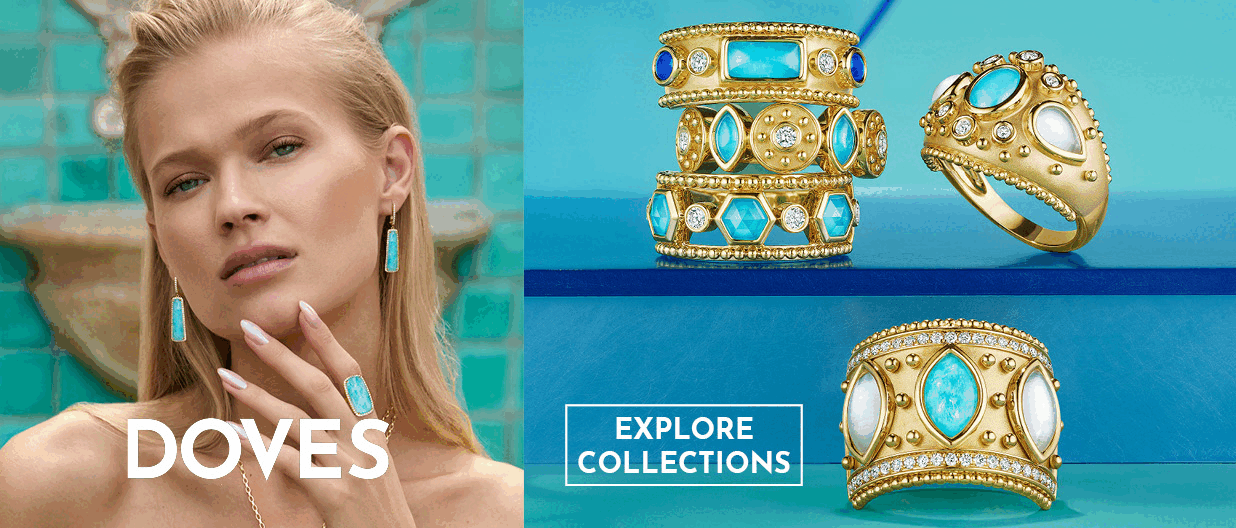Sales Strategy
Make Yourself Verbally Attractive | June 08, 2016 (0 comments)

This is part five in a series of the Science of Successarticles based on research of top performing fine jewelry sales consultants, conducted by Exsellerate, Inc. Click here to access the free white paper from the research studies.
Tampa, FL--“Oh, she’s as pretty inside as she is outside,” is a phrase used by every proud grandmother. OK, we get visual attractiveness but what makes one internally pretty?
Communication is at the core of all that we do as human beings. While verbal interaction may seem to come naturally, it is a rich and complex process. Communication requires us to be aware of and tuned into thousands of data points from nonverbal cues to gestures, and even subtle verbal cues.
While most people can relate to being repelled by various topics of discussion, there also are certain words that stop communication from occurring. Words that, when used, cause our minds to close, our mouths to shut and our brains to mentally pack up shop. But those words are different for different people.
New findings from a pilot study conducted by Target Training International’s Center for Applied Cognitive Research suggests the way we communicate with one another and the words we choose are vitally important. In fact, what seems to be critical is avoiding the wrong words: words that seem to fit the discussion from our point of view may actually result in negative reactions when interpreted by others.
Every person has a set of words, based on their dominant behavioral style, that when heard may evoke a precognitive negative reaction in the brain. Immediately upon hearing that word and before a person can even process their thoughts, their brain has initiated a stress reaction and possible avoidance. When a word that doesn’t work is uttered, it can shut down communication before it’s started, create unnecessary barriers and steadily erode otherwise functional relationships.
While many people have some knowledge of the DISC behavior profile, these descriptions go beyond simply compartmentalizing the four styles of behaviors. Here are the descriptions of DISC for those unfamiliar with them, and a series of words that can turn these individuals off.
DISC Behavior Styles Defined
D stands for Dominance. Dominance really speaks to how we respond to problems or challenges. For an example of a high “D” think Donald Trump.
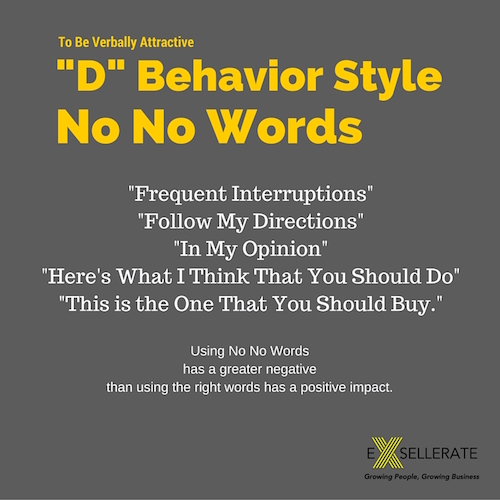
I stands for Influence. Influence refers to how we influence and relate to people and contacts. For an example of a high “I” think Oprah Winfrey.
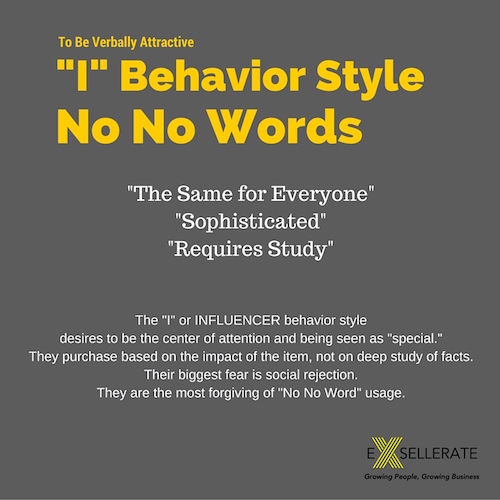
S stands for Steadiness. Steadiness is how one responds to pace and consistency. For an example of a high “S” think Mr. Rogers of the children’s TV show.
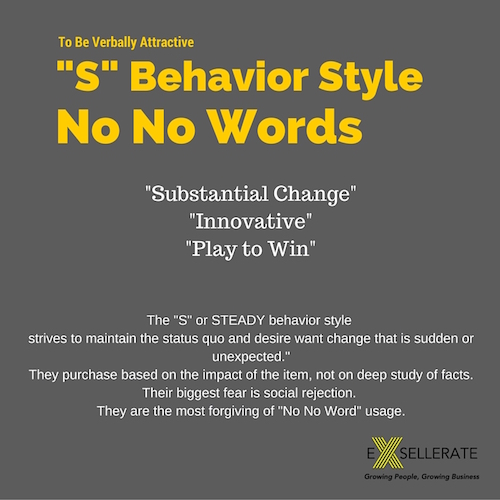
C stands for compliance. Compliance is how we respond to procedures and constraints. C’s are extremely precise and accurate. For an example of a high “C” think Bill Gates.
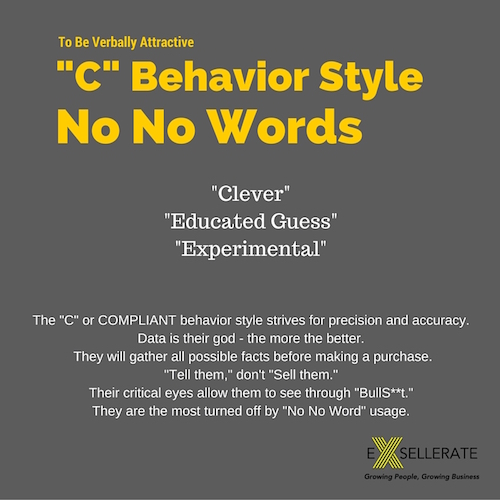
Mastering authentic relationships is key habit to develop in both business and life. Every person has a set of words, based on their dominant behavioral style (DISC), that when heard either evoke a precognitive positive or negative reaction in the brain. Immediately upon hearing that word and before a person can even process their thoughts, their brain has initiated a reaction in the pre-frontal lobes. When a word that doesn’t work is uttered, it can shut down communication before it’s started, create unnecessary barriers and steadily erode otherwise functional relationships.
Musicians listen to the pitch of those around them and then adjust their fingers or lips on their musical instrument to bring themselves into perfect harmony. They do this on every single note of every single symphony that they play. Like a musician, you must train yourself to listen to others and use the words that bring yourself and a perfect emotional harmony. This creates a verbal attractiveness.
Do this and you will be “as pretty inside as you are outside.”
Terry Sisco, founder and CEO of Exsellerate, Inc. has observed, studied, assessed and benchmarked the sales top performers throughout the fine jewelry industry for more than 40 years. From these insights he has authored and facilitated fun and engaging training programs that have impacted the performance of major bridal brands, industry giants such as Platinum Guild International and Blue Nile Global Call Centers, as well as national and regional chains and high-end independents. He is a CPBA, CPVA, CPHD certified to assess and analyze behaviors and driving forces. He has recently completed a research study funded by Platinum Guild USA to determine the behavioral commonalities of the top 1% of fine jewelry sales performers throughout the United States. Contact Terry Sisco, tlsisco@exsellerate.com, (813) 787-7355, www.exsellerate.com, facebook.com/exsellrev.
